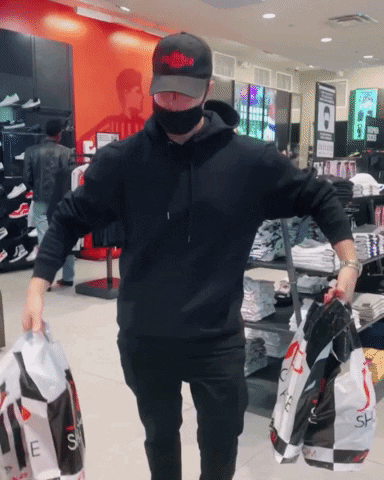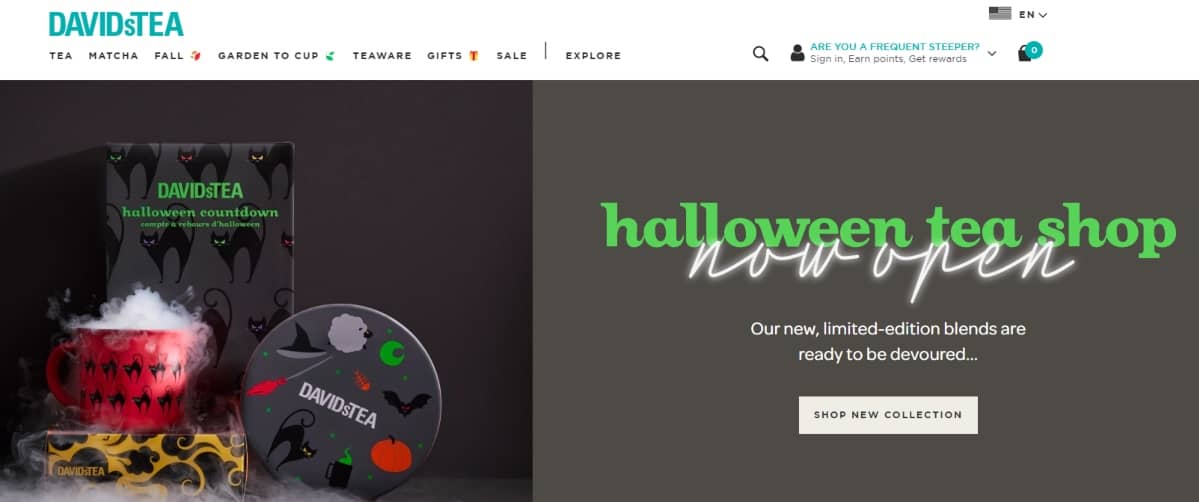Ultimate Guide to Behavioral Segmentation (+ Examples)
Most marketers know all the various digital marketing strategy components but often dismiss the ever-important behavioral segmentation.
But not you!
You are the sharp-witted marketer eager to learn how marketing segmentation works to lure in potential customers, right?
That’s why your eyes landed on this ultimate guide.
Keep reading because we’ll take you into the wonderful (and valuable!) world of behavioral segmentation.
What is Behavioral Segmentation?
No one customer is the same as another. Nor is their behavior.
Yet many marketers still dream every night about how their general one-size-fits-all marketing plan magically attracts people from all walks of life who smoothly convert into raving fans
Time to burst those marketers' dreamy bubbles; the above is not how it works.
At least no longer.
A thorough understanding of customer behavior is crucial when designing marketing strategies. You want to focus on facts rather than on assumptions.
And that’s where behavioral segmentation enters the game! It is market segmentation based on consumer behavior.
Do you know your customer’s behavioral traits?
To give you some ideas:
- Their attitude and response to your product, brand, or service.
- How do they interact online with your brand?
- How do they use your product or service?
- What is their awareness of your brand?
- What’s their previous purchasing behavior?
- How do they make a purchase decision?
- Why do they choose your product over another?
By tracking and analyzing behavior — behavioral segmentation — you can categorize your web visitors and existing customers into specific groups based on the above behavior patterns.
After which, you can tailor your offers to meet your consumer’s needs and increase the likelihood of purchase.
Benefits of Behavioral Segmentation
Personalization is one of the key components of a successful marketing strategy.
Customers want to feel special and treated as extraordinary, and it should be a marketer's mission to make that happen.

Hyper-targeting, however, requires knowing your customer's demands and motivations, learning their buying patterns, and how they interact with your brand.
And that’s where behavioral segmentation comes to the rescue!
Let’s check out some of the main benefits:
- High engagement: When you filter out the customers with the highest engagement, you’re not wasting valuable marketing efforts on the uninterested.
- Personal experiences: Blanket-dropping your digital leaflets without a plan is a thing of the past. When you know the wants and needs of your customers, you can make more personalized offers.
- Targeting accuracy: You will be able to target prospects and clients more accurately.
- Cost-effective: No more wasting your precious budget on those who aren’t interested.
- Predictive: You can use historical behavior patterns to predict and influence future behavior.
- Better addressing their needs and desires: A no-brainer. But to address their needs, you’ve got to know their needs.
The more you can increase personalization, the higher the level of customer satisfaction.
And the more a customer feels looked after, the more they favor your brand over another.
Types of Behavioral Segmentation
1. Purchasing behavior
How do they approach a purchase decision?
Purchase behavior research will tell you how a consumer behaves before or during purchasing a product.
This behavior largely depends on the type of product they’re looking at buying.
For example, buying a new car requires a greater level of involvement than buying a branded t-shirt. 👕
You can categorize consumer buying behavior into four main types:
- Complex buying behavior
- Dissonance-reducing buying behavior
- Variety-seeking buying behavior
- Habitual buying behavior
By understanding purchasing behavior, you can improve your marketing message and aim for better results.
2. Usage behavior
How often do customers use — or purchase — your product or service?
What is their need and level of consumption?
Segmenting your customers by usage behavior gives you a solid and valuable indicator of brand loyalty (or the absence of...), churn rate, CLV, and customer retention, to name a few.
You can segment customers into three categories:
- Heavy users — frequent buyers and most engaged.
- Medium users — buying half-regularly, often based on a certain time or event.
- Light users — mostly one-time buyers.
Having a clear usage overview, you’re more able to optimize the various parts of the customer journey.
3. Benefits sought
What are the benefits they’re after?
Do you, the fashion follower, seek the same benefits when buying sporty footwear as your uncle Joe, the trail runner, does?
Probably not.
Benefit segmentation pinpoints your customer’s core product needs.
Consumers don’t necessarily buy based on just one benefit, so keep aiming for your product or service to have a line-up of benefits.
Knowing the benefits sought, you’ll be able to position your product in the market better.
4. Occasion or timing-based

Any special occasion people buy for?
This behavioral segment refers to special occasions customers buy for, such as the Christmas season, birthdays, weddings, anniversaries, etc.
You can also say there’s a social, emotional, or functional goal for buying a specific product at a certain time of the year or day of the week.
It’s generally divided into three types of occasions:
- Universal: purchasing behavior shown by most of your target customers. The occasions include holidays and seasonal events.
- Recurring (personal): consistently repeated buying patterns, for example, birthday or anniversary. These are easy to predict, so you can prepare your marketing strategy in advance.
- Rare (personal): impulsive and irregular buying behavior, such as a wedding, spontaneous vacation, road trip, etc.
5. Customer journey stage
Where is your customer currently in their journey?
Follow their behavior across all customer journey touchpoints and identify the pain points and reasons why they can’t (or won’t) complete the journey.
The goal here is to be able to target your users differently, depending on the various current stages they’re at.
Admittedly, it’s not the easiest marketing segmentation, as some users may jump back and forth between stages.
Generally, however, customer journey segmentation will enable you to differentiate your behavioral targeting strategies and personalize your customer experience.
6. Customer satisfaction
A happy customer is a repeat customer!
Customer satisfaction is essential for customer loyalty, and the level of customer loyalty can seriously affect your organization’s financial performance.
Therefore, customer satisfaction is a strategy to bind existing customers to your organization and increase their loyalty.
7. Customer loyalty
Who are your most loyal customers?

A loyal customer is your brand’s most valuable asset for a few reasons:
- Cheaper to retain
- Have the highest customer lifetime value
- Your top brand advocates
Behavioral data helps you to identify your most loyal clientele and provides valuable insights into how their loyalty takes shape.
Loyal customers not only return and repurchase more often, but they also spend more money per purchase.
In addition, they provide referrals, testimonials, value feedback, and the all-important word-of-mouth recommendations.
8. Interests
What are their main interests?
To drive customer engagement to a higher level, simply deliver more personalized value.
You can achieve this by knowing and understanding your customer’s personal and professional interests.
Interest-based behavior segmentation helps you to filter these interests, after which you can link them to other potentially related interests.
Partially helpful when, for example, you want to target your buyers with upselling or cross-selling offers.
9. Customer engagement level
What is your customer’s engagement level?
Engaged customers will push sales up and can generate significantly more revenue than non-engaged customers.
Customer engagement is divided into three levels:
- Occasional: Only sporadic contact or interaction with your brand or service.
- Regular: Consistent interaction, but not to the full extent.
- Intensive: Interaction to the max and buying your product anytime.
Grouping your customers gives you better options to target the various groups more specifically, based on their engagement level.
10. User status
How and how much do people use your product or service?
Here are some of the most common user statuses:
- Non-users — don’t use your product or service and don’t know (just yet) they need it.
- Prospects — a potential customer who has the info and resources but hasn’t purchased yet.
- First-time buyers — they slide down your marketing funnel and make great targets for attractive follow-up marketing.
- Regulars — are ready to be offered more or other types of products.
- Defectors — could have abandoned your product out of low satisfaction or loyalty.
11. Spending habits
How do your customers spend their money?

Many people have repeated routines and practices to spend their money.
Some examples:
- Using a credit card, coupons, or cash only
- Buying online or in-store
- Make impulse purchases
- Spend cautiously or freely
- Buy throughout the month or on payday only
Analyzing these spending habits and knowing how buyers spend their money can give you valuable information on when and how to target consumers with your marketing efforts.
12. Brand interactions
How do people interact with your brand across all of your channels?
In other words, how engaged are they? This can be both physical and digital.
Interaction examples:
- Number of website visits
- How many web pages are opened
- How do they engage with your social media
- What content is being viewed, and how often
- How many physical store visits
- Frequency of purchasing
Tracking brand interactions and level of engagement could be a valuable indicator of the effectiveness of your marketing campaign.
Behavioral Segmentation Examples
1. Purchasing behavior
Here are some examples of the four main purchasing behavior types:
- Complex — these are usually the bigger, more expensive decisions to make. An example is deciding between buying a Porsche or a Jaguar.
- Dissonance-reducing — a major purchase, though there is little difference between the targeted products or brands. For example, buying a diamond ring.
- Variety seeking — switching for variety, such as buying hand soap with different scents.
- Habitual — little involvement and little product differences. Buying the same (daily) brands out of habits, such as milk or chips.
2. Usage behavior
BabyCentre UK is a pregnancy and childcare resource and part of multinational Johnson & Johnson.

They effectively use the Facebook Messenger app to deliver personalized advice and targeted recommendations.
BabyCentre sends out advertising photos, and when a parent selects weaning as the problem or challenge, the BabyCentre app pulls the user in by providing a list of indications to watch for, as well as solid food recipes, depending on the child’s age.
3. Benefits sought
An example of benefits is the skin brand Olay.

Using AI, they collected more than 10 million behavioral data points with the Olay Skin Advisor and were able to produce and offer products more tailored to their customer’s needs.
4. Occasion or timing-based
Are you the person who buys flowers only on Valentine’s Day? It’s a classic example of occasion/timing-based buying.
The same goes for Christmas items in the Holiday season, 4th of July sales, jewelry on anniversaries, Black Friday, back to school, and Summer BBQ weather, to name a few.
And let’s not forget the weekend specifics, such as pizza deliveries or movie theater tickets.
One company that makes clever use of timing-based marketing is Starbucks. Through its app, customers get Happy Hour push notifications. This happens on selected Thursdays each month.
5. Customer journey stage
A tactic to help guide your customer down the journey toward buying is the abandoned cart email.
Sleep company Casper is a top example; their subject line is “Did you forget something?” Then, when clicking, the headline goes “Come back to bed” to draw you in further.
Or take Nomad, for example. Subject line: “Nomad Gear is Selling Out Quick,” pushing clients to click through due to FOMO.
6. Customer satisfaction
Measuring satisfaction is mainly done via customer surveys.
When asking the right questions, you’ll be able to gather the feedback, opinions, and responses needed to improve your business.
You can ask questions about product usage, demographics, psychographics, and satisfaction scale, and you can include a free format.
Hubspot created an excellent article, sharing satisfaction survey examples.
7. Customer loyalty
DavidsTea is a Canadian specialty tea retailer that found a creative approach to tailoring its marketing to its most loyal customers.

When a customer reaches a specific anniversary with the company, they receive a ‘look back’ email with details such as their most purchased tea and when their first purchase occurred.
These timeline-style emails received high praise, making customers more likely to continue buying because they feel unique and valued throughout the customer journey.
8. Interests
Have you ever wondered how come platforms such as Netflix and Spotify offer you content and songs you happen to love?
Those platforms successfully made it an art of offering their subscribers almost precisely the content they’re interested in based on previously shown interest.
Continuously offering similar series and movies keep its subscribers engaged to the max.
9. Customer engagement level
Using surveys or CTR metrics will tell you a great deal about your customers' engagement.
It tells you what works and what doesn’t.
Tips include:
Bringing sleeping customers back to life by offering them a ‘reconnect’ discount.
Offering a loyalty program or reward scheme to the most regular buyers.
10. User status
Have you ever received an email asking if you’re still happy with your purchase and possibly need extra help and support?
Or an email thanking you as a customer and then, as a bonus seeing an upgrade or discount voucher for your next purchase attached?
These companies use user status to drive satisfaction and persuade consumers to buy another product or service.
11. Spending habits
One of the ways to monetize this segmentation knowledge is to invite online buyers to pay a visit to your physical store and maybe even attach an in-store discount voucher.
Many retailers know that when consumers enter a physical store, they often tend to buy more than initially planned.
12. Brand interactions
A well-known brand that can offer products and services on numerous levels is The Walt Disney Company.

Consumers can interact with Disney by watching their movies and TV shows, visiting the theme park, buying merchandise online and in-store, visiting their website, booking a vacation, etc.
Behavioral Data is Key!
“Knowing who your customers are is great, but knowing how they behave is even better” — Jon Miller, CEO Engagio
Behavioral segmentation may be one of your most valuable customer data assets.
Start clustering customers by their behavior patterns and get a competitive advantage over those still in a marketing dream state.
Even though other customer segmentation variables, such as geographic and demographic segmentation, are much easier to execute, behavioral segmentation is undoubtedly worth the extra effort.
Go get that behavioral data!
Loes Kotoun is an elated Smart Blogger Certified Content Marketing writer on a mission to make her writing the answer to your content prayers. She sprinkles fairy dust over SEO-friendly words so your business can set foot in the spotlight. Connect with her on LinkedIn or visit her writer profile.